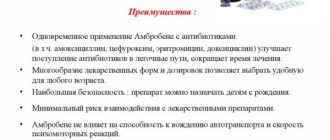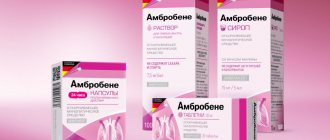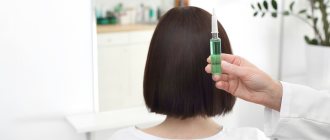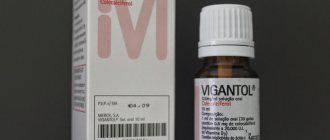Nimulid suspension bottle 50mg/5ml 60ml
A country
India
Country of manufacture may vary depending on the batch of goods. Please check with the operator for detailed information when confirming your order.
Active substance
Nimesulide
Compound
The active substance is nimesulide.
pharmachologic effect
Anti-inflammatory, antipyretic, analgesic. Selectively inhibits cyclooxygenase-2, suppresses prostaglandin synthesis at the site of inflammation. Inhibits lipid peroxidation and does not affect hemostasis and phagocytosis. After oral administration, it is well absorbed from the gastrointestinal tract. Maximum concentration is achieved after 1.5–2.5 hours. The half-life is 2-3 hours. Biotransformed in the liver. The main metabolite is the pharmacologically active hydroxynimesulide. It is excreted primarily by the kidneys. It does not accumulate with long-term use. Nise gel is a new generation non-steroidal anti-inflammatory drug (NSAID) from the sulfonamide class. It has a local analgesic and anti-inflammatory effect. When applied topically, it causes a weakening or disappearance of pain at the site of application of the gel, including pain in the joints at rest and during movement, reduces morning stiffness and swelling of the joints. Helps increase range of motion.
Indications for use
Osteoarthritis, osteoarthritis, bursitis, tendonitis, pain and inflammatory processes (in case of injuries, in the postoperative period, gynecological and infectious-inflammatory diseases). Nise gel: inflammatory and degenerative diseases of the musculoskeletal system (articular syndrome with rheumatism and exacerbation of gout, rheumatoid arthritis , psoriatic arthritis, ankylosing spondylitis, osteoarthritis, osteochondrosis with radicular syndrome, radiculitis, inflammatory damage to ligaments, tendons, bursitis, sciatica, lumbago). Muscle pain of rheumatic and non-rheumatic origin. Post-traumatic inflammation of soft tissues and the musculoskeletal system (damage and rupture of ligaments, bruises).
Interaction
It can increase the effectiveness and toxicity of many drugs, due to their displacement from sites of binding to plasma proteins and an increase in the free fraction in the blood (with the simultaneous administration of hydantoin and sulfonamides, regular medical supervision is required). Enhances the effect of medications that reduce blood clotting; increases plasma lithium levels.
Side effect
Headache, dizziness, drowsiness; very rarely - thrombocytopenia; nausea, heartburn, stomach pain, tarry stools, melena; petechiae, purpura; oliguria; allergic reactions (exanthema, erythema, urticaria). Nise gel: Local reactions: itching, urticaria, peeling, transient change in skin color (not requiring discontinuation of the drug). If any adverse reactions occur, you should stop using the drug and consult your doctor. When applying the gel to large areas of the skin, the development of systemic adverse reactions cannot be ruled out: heartburn, nausea, vomiting, diarrhea, gastralgia, ulceration of the gastrointestinal mucosa, increased activity of “liver” transaminases; headache, dizziness; fluid retention, hematuria; allergic reactions (anaphylactic shock, skin rash); thrombocytopenia, leukopenia, anemia, agranulocytosis, prolongation of bleeding time.
Contraindications
Hypersensitivity, peptic ulcer of the stomach and duodenum in the acute stage, severe dysfunction of the liver and kidneys, bleeding from the gastrointestinal tract, type 2 diabetes mellitus, arterial hypertension, congestive heart failure, pregnancy, lactation. Restrictions for use: children's age (up to 12 years ).
Overdose
Symptoms: increased severity of side effects. Treatment: gastric lavage, administration of activated charcoal.
special instructions
Prescribed with caution to elderly patients, with cardiovascular diseases, including arterial hypertension, bleeding tendency, disorders of the upper gastrointestinal tract, impaired renal function, during treatment with anticoagulants and antiplatelet agents. If visual disturbances occur, you should immediately stop taking the drug and consult an ophthalmologist. Patients with diabetes mellitus and patients on a low-calorie diet should take into account that the drug contains sucrose. Prescribe with caution to patients whose work requires increased attention and reaction speed.
Dispensing conditions in pharmacies
On prescription
Release forms and composition of the drug
The drug is available in pharmacies in several dosage forms. However, for children only syrup for oral use is used, packaged in 60 ml dark glass bottles. Each bottle is placed in an individual cardboard box, where you can also find instructions that describe in detail all the rules for using the medication.
The syrup or suspension is a sweet, dark-colored liquid. When you separate the required amount of product, you will notice that it has a viscous consistency. Each box contains not only a bottle and instructions for the product, but also a special measuring cup that makes it easier to dose the medicine at home.
The medicine contains the active substance nimesulide, which has the main therapeutic effect. 1 ml of syrup contains 50 mg of active ingredient.
The composition also contains auxiliary components:
- Macrogol.
- Sodium benzoate.
- Magnesium stearate.
- Sodium disulfite.
Additional substances do not have therapeutic properties. In addition to syrup, gel, oral tablets and lozenges are available. However, these dosage forms are not used in the treatment of children and are indicated only for adults.
special instructions
Nimesulide is a syrup for children, prescribed only when indicated and after a preliminary diagnostic examination. If complications occur, it is important to stop using the medication immediately. Exceeding the dosage is strongly not recommended, especially when treating children under 1 year of age.
You can drink the syrup with water, as it has a very sweet taste. When treating children, it is important not to give the drug to the patient on an empty stomach. This can lead to complications in the digestive tract.
If the syrup is taken by an adult, he is usually prescribed drugs to suppress the production of hydrochloric acid in order to reduce the weakening of the negative effect of nimesulide on the mucous membranes of the stomach and intestines.
The syrup is prescribed with extreme caution to patients who have a history of blood pathologies characterized by a violation of the process of platelet formation.
In addition, it is worth considering the ability of nimesulide to retain fluid in tissues, which can lead to an increase in blood pressure. That is why the medication is prescribed to adults with caution and only if there are strict indications.
Overdose
Cases of drug overdose have been recorded. The condition manifests itself in the form of apathy, depression and lack of appetite. In addition, many patients experience respiratory depression, pale skin and dry mucous membranes of the oral cavity.
In severe cases, overdose is accompanied by repeated vomiting and the development of internal bleeding of the digestive tract. In this case, severe weakness, a critical decrease in blood pressure, and loose stools are noted. Vomit and feces become dark in color, and the general condition worsens.
With such disorders, the patient spends most of the time in a horizontal position and reports dizziness and lack of appetite. Lack of treatment leads to the development of severe complications, including death.
If signs of overdose appear, you should immediately consult a doctor who will prescribe symptomatic therapy. Treatment is usually carried out in a hospital setting.
Side effects
Nimesulide is a syrup for children, which can cause complications if the rules of use are not followed.
Violations can also develop if all recommendations are followed and affect the functioning of organs and systems:
- From the nervous system, headache, weakness and dizziness may occur. The child may become restless, there is motor activity and worsening sleep. School-age children become inattentive, there is memory deterioration and a decrease in mental performance. Such disorders are accompanied by rapid fatigue, decreased physical strength and endurance.
- From the digestive tract, nausea, pain in the stomach and loss of appetite are observed. Some patients experience stool disorder, manifested as diarrhea. In combination with frequent vomiting, the symptom leads to the development of dehydration, which manifests itself in the form of weakness, pallor and extreme thirst.
- From the cardiovascular system, the development of tachycardia and changes in blood pressure are possible. Such disorders are more typical for children over 12 years of age and adults; they are extremely rare in children.
- From the urinary system, there is increased frequency of urination and pain in the kidney area. Sometimes cystitis develops, but more often in adult patients.
- Disorders of the respiratory system usually develop in patients who suffer from chronic pathologies of the lungs and bronchi. Complications manifest themselves in the form of shortness of breath, asthma attacks or bronchospasm.
Sometimes adverse reactions manifest themselves in the form of allergies. In this case, the patient develops a rash, areas of peeling and irritation. Severe itching and burning of the skin leads to a deterioration of the condition, as well as aggravation of symptoms as a result of damage to the lesions.
If complications occur, it is important to stop using the medication and consult a doctor. Often the symptoms disappear after stopping the medication. However, if the condition worsens, the doctor prescribes symptomatic therapy.
Indications for use
Nimesulide is used to treat children of all ages.
Syrup is prescribed if there are the following indications:
- Acute and chronic myalgia in school-age children. Syrup is usually not prescribed to babies, as they rarely suffer from such disorders.
- Joint pain due to colds or inflammation. In the second case, the medicine is used as part of complex therapy to enhance the effect of drugs from other groups.
- Fever due to infectious diseases.
- Increased body temperature due to viral and cold pathologies of varying severity.
- Influenza in children of preschool and school age.
- Feverish state in arthritis of rheumatic and other origins.
- Pain in the limbs due to bruises of soft tissues, muscles or sprained ligaments.
- Recovery period after bone fractures.
- Inflammation of the joint capsule with the development of a purulent process or without the appearance of such disorders.
Quite often, the remedy is used to relieve pain in children during teething, as well as as a treatment for fever after the administration of vaccines. In the second case, the drug is combined with antihistamines to enhance effectiveness.




